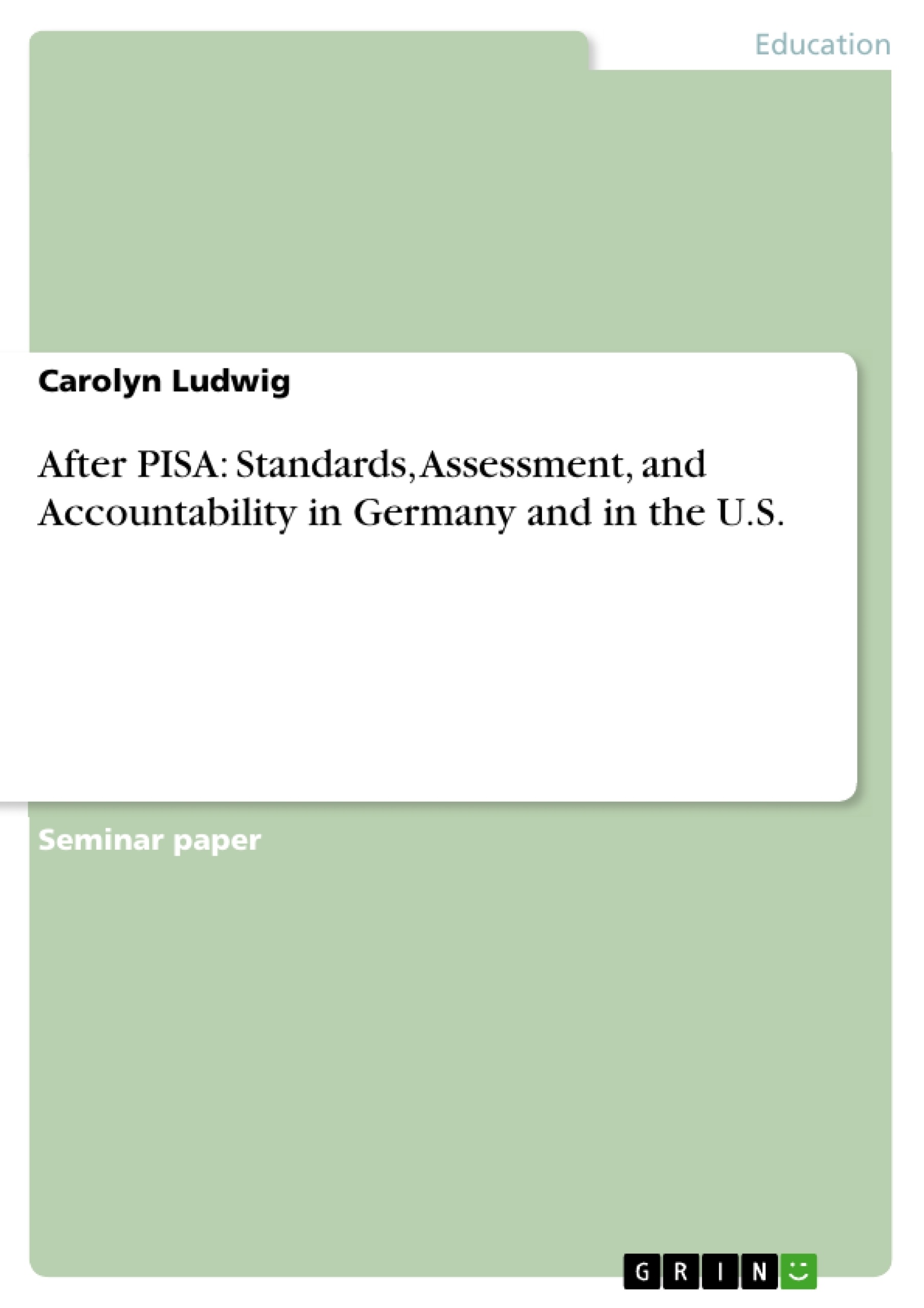In 2000, the OECD conducted the first PISA study. Students from 28 OECD-member and four OECD-nonmember states took part, among them Germany and the U.S.
Germany was ranked 21st both in mathematics and science, and the 22nd in reading. It thus got an overall 21st ranking. The U.S. were ranked 20th in mathematics, 15th in science, and 16th in reading, thus ranked 17th overall. This meant an overall below score average for both countries. Besides ranking the performance of the students, the results also shed light on the correlation between socioeconomic status and academic achievement. Germany displayed the highest correlation between student performance and social background of all countries tested. In addition, student performance strongly varied between the school forms Gymnasium, Hauptschule and Realschule. Regarding educational equality, this finding challenged Germany’s tripartite school system. “Socio-economic disad-vantage has a notable impact on student performance in the United States”, too (cf. OECD 2011), albeit by far not as strong as in Germany. In light of the high child poverty rate in the U.S. , this finding could have been anticipated. Nevertheless, it was alarming.
PISA has been criticized for its objective, methodology, and the interpretation of its results. It is, for example, problematic to test and compare the achievement of students, disregarding the school form they visit at the time of the assessment. Moreover, the fact that the students tested by PISA were schooled in completely different school systems challenges the comparability of the results. Nonetheless, PISA has a great social impact. When the results of the first PISA study were published in 2001, Germany and the U.S. conceived of them as a “shock” and reacted similarly: with major reforms of their education systems that would not have been otherwise possible. The changes were immense, particularly with regard to educational progress assessment, teacher accountability, and trans-regional comparability of educational standards. How did this affect the results of the second PISA study, which was conducted in 2003? While the nature and the purpose of both countries' reform agendas were questionable, the U.S. reforms in particular were condemned to failure. They were inadequate for improving the education system and thus the PISA results. Based on a comparison of the two reform agendas, ideas on how to adequately improve education will be presented in the conclusion.
Inhaltsverzeichnis (Table of Contents)
- Introduction
- 2001: The "PISA shock" hits Germany and the U.S.
- After PISA: Reforms in Germany
- After PISA: Reforms in the U.S.
- The development of the results in the following PISA studies
- Conclusion and future outlook
Zielsetzung und Themenschwerpunkte (Objectives and Key Themes)
This work explores the impact of the PISA study on educational reforms in Germany and the United States. It investigates the nature and effectiveness of the reforms implemented in both countries, aiming to provide insights into their effectiveness and lessons learned. Key themes include:- The role of international assessments, such as PISA, in shaping national educational policies
- The impact of high-stakes testing on teaching and learning, known as washback
- The effectiveness of reform agendas implemented in response to PISA results
- The role of political ideologies and structures in influencing educational reforms
- The importance of addressing educational equity and social mobility
Zusammenfassung der Kapitel (Chapter Summaries)
- Introduction: This chapter introduces the PISA study and its impact on Germany and the U.S. It highlights the initial PISA results and the resulting "shock" experienced by both countries. The chapter also discusses the limitations and social impact of PISA while emphasizing the significant changes in education systems prompted by the study.
- 2001: The "PISA shock" hits Germany and the U.S.: This chapter delves into the initial PISA results, their reception in Germany and the U.S., and the subsequent reforms implemented in response. It examines the concept of "washback," the influence of testing on teaching and learning, and the different political agendas driving the reform efforts in both countries.
- After PISA: Reforms in Germany: This chapter focuses on the specific reforms implemented in Germany following the PISA results. It examines the development of national education standards, the introduction of all-day schools, and the role of political parties in shaping the reform agenda. The chapter also explores the political dynamics that led to the implementation of the reforms.
- After PISA: Reforms in the U.S.: This chapter examines the reforms undertaken in the U.S. in response to PISA. It discusses the effectiveness of these reforms in achieving their stated objectives and analyzes the reasons for their success or failure. The chapter provides insights into the challenges faced by the U.S. in implementing its reform agenda.
Schlüsselwörter (Keywords)
This work focuses on the impact of the PISA study on educational reform in Germany and the U.S. Key terms include: PISA, international assessment, education reform, washback, high-stakes testing, educational equity, social mobility, political influence, Germany, U.S., national education standards, all-day schools, teacher accountability, and educational progress assessment.- Quote paper
- Carolyn Ludwig (Author), 2014, After PISA: Standards, Assessment, and Accountability in Germany and in the U.S., Munich, GRIN Verlag, https://www.grin.com/document/277494



